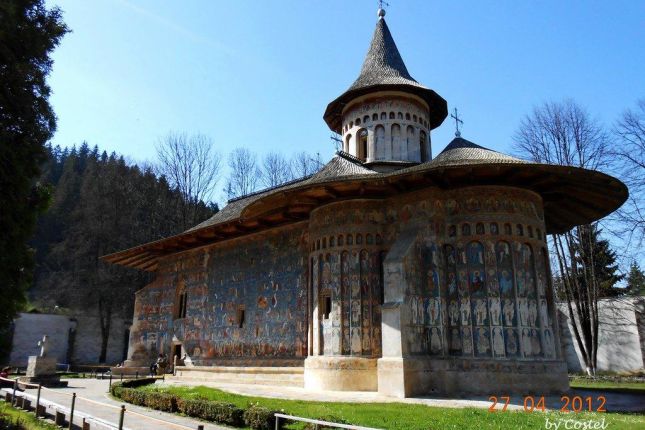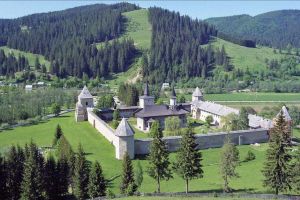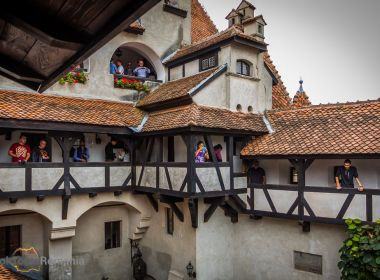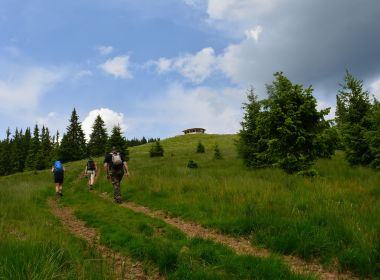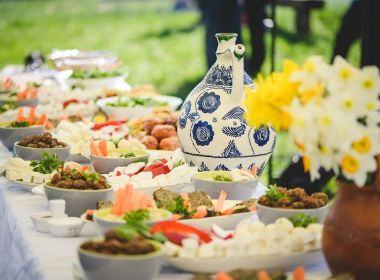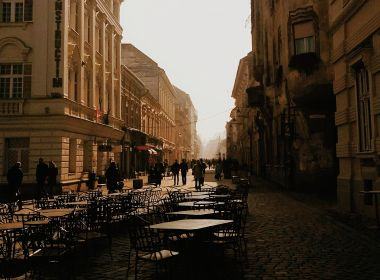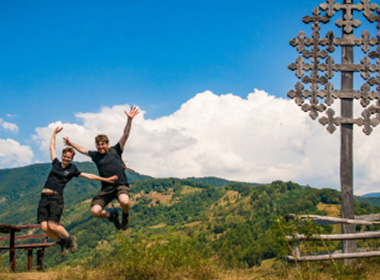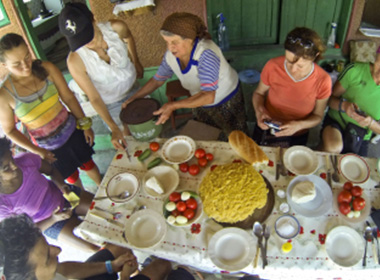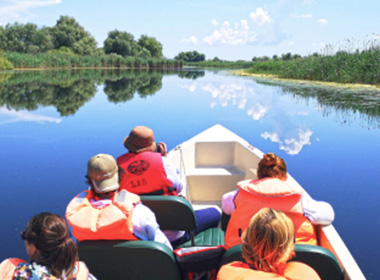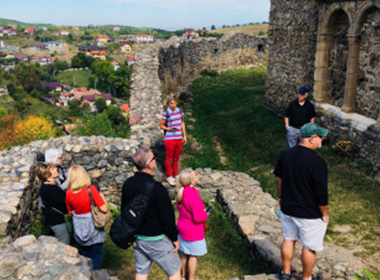UNESCO Bucovina Monasteries: The Painted Monasteries of Bukovina
According to what tourists I accompany tell me when we go on various trips, one of the most striking things about Romania is the incredibly high percentage of people of the same religious orientation— 85,3% of Romanians identified as Christian Orthodox in the last census. With most countries inhabited by people of such diverse nationalities and religions, it is something new to find a place that is still so religiously homogenous.
But all it takes is one trip to the Bucovina countryside or one visit to any of Bucovina's painted monasteries for them to have their "A-HA" moment and admit that this trait that we still have, comes from within, not from an intention to keep other influences out.
The historical context, the spiritual peace, the sight of hundreds of people constantly coming to find comfort within the church walls, and the faith people put into these establishments are remarkable.
The Romanian-painted monasteries are not just another reason to visit Romania and see a relic of who we were; they offer a good understanding of what Romanians are and what they value most, how they see themselves against the rest of the world, and how we find our place in the fabric of all existence.
So, come to Romania and opt to see some or all the monasteries, get an idea of their historical importance, and do a vibe check on the location if you like. But I know from experience that everyone completes this journey just a bit more peacefully than they were when they started.
Table of contents
- Welcome to the land of painted churches
- The historic importance of the painted monasteries of Bucovina
- The cultural and artistic value of the Romanian-painted monasteries
- Get acquainted with the terminology
- 1. Sucevita Monastery (“The Church of the Resurrection”)
- 2. Moldovița Monastery (“The Church of the Announciation”)
- 3. Voronet Monastery (“St. George” church)
- 4. Probota Monastery (“St. Nicholas” Church)
- 5. Arbore Monastery (“the Beheading of Saint John the Baptist”)
- 6. Humor Monastery (The “Dormition of the Virgin Mary”)
- 7. Pătrăuți Monastery (“The Church of the Holy Cross”)
- 8. Suceava Monastery (“Church of St. George”/ Saint George's Church)
- Experience spirituality in a different way by visiting the Bucovina monasteries
- Can you spend the night at any of the monasteries?
Welcome to the land of painted churches
Eight churches have been included in the UNESCO World Heritage list mainly because they are „masterpieces of mural painting, and are of outstanding aesthetic value due to their consummate chromatism and the remarkable elegance of the figures.”
Find more info on highlights of the Painted Churches of Moldova here.
Nearby citiy: Suceava, Iasi
Nearby airport: Suceava, Iasi. Daily flights from Bucharest to Suceava/Iasi are also available.
This Northern part of the country, the Bucovina region mainly, is known for being generally more religious, making it only natural that this place would be the come of these spiritual jewels. The Maramures region may have wooden churches with tall steeples, and the country's center may have its Saxon Western-like fortifications. But only in Bucovina can you witness Romanians' authentic approach to religion through these marvels.
The historic importance of the painted monasteries of Bucovina
The Middle Ages period was difficult for all Romanian principalities as they were constantly in the way of the expansion of the Ottoman Empire. The rising force of the sultan and its great armies kept local rulers on high alert. Given the importance of religion in these period conflicts, one of the ways in which voivodes marked their victories, among other turning points in their rule, was by having a monastery built on an important site.
Therefore, this was an important moment in religious life in Southern Bucovina (the part of Bucovina that remained in Romania after the North was annexed to Ukraine at the end of WW2). Given the historical context and the imminence of attacks, these religious edifices also helped protect the people living in the vicinity. Beyond the monastery walls, they were safe. Every fortified monastery is a testament to the odd yet perfect combination of monastic life and military purposes.
Apart from the intricately ornate church buildings, each monastery compound was designed like a medieval fortress, with the chambers of the nuns or monks living there and neighboring pieces of land that could be used to support life within the monastery walls.
The painted monasteries of Bucovina, located in the North of Moldova, in northern Romania, are unique in Europe due to their extensive interior and exterior decorations—the paintings cover all the exterior walls and represent well-preserved frescoes of various religious themes.
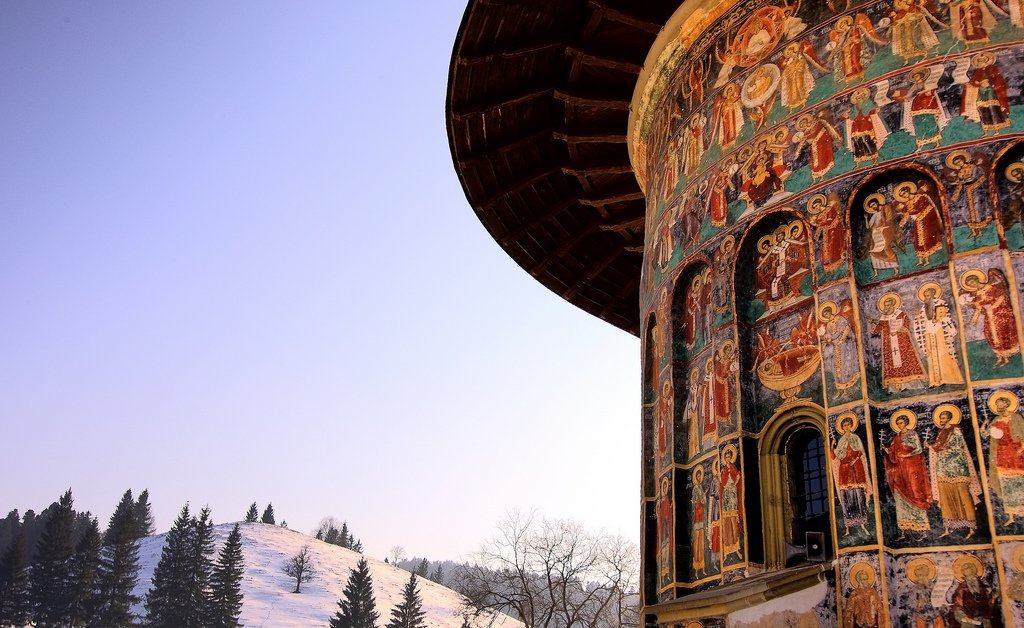
The cultural and artistic value of the Romanian-painted monasteries
These painted monasteries are part of a notable group of eight Romanian Orthodox monasteries recognized as UNESCO World Heritage Sites. These masterpieces of the Byzantine style feature exterior frescoes and interior paintings representing Bible stories from the Old and New Testaments, the lives of saints and the founders of the church, scenes from the life of Jesus, and depictions of heaven and hell, all in the style specific to Orthodox Christianity.
Built at the end of the 15th and beginning of the 16th century, they’re one of the most popular tourist attractions in Romania and one of the main reasons people visit Bucovina.
Visiting painted monasteries will give you a detailed insight into life in a place where monastic virtues are best preserved. Everything you will see, from the embroideries to the paintings to the ecclesiastical silverware, is deeply rooted in religious life. The outside world rarely, if ever, seeps into these compounds, usually only with the visit of outsiders such as us.
Get acquainted with the terminology
While visiting these monasteries, you will encounter some words specific to the context and organization of the Orthodox Church. As a guide, I try not to insist too much on the too-specific things, but some of them are vital.
- What is a ktitor?
Also known as a founder, a ktitor is the ruler or boyar (but usually a ruler) who gives the order for the monastery to be built. Usually, these grand constructions with ornate facades, like the western wall of Voronet or the South Facade of Arbore Monastery, were meant to mark a military victory, someone's coming to the principality's throne, or some other important historical moment. Apart from being religious sites, these are also important historical landmarks.
- What is a "hram"?
Every religious unit, be it a monastery or small church, is dedicated to a saint, be it Saint John, Saint George, or Saint Nicholas, or to a special moment in the bible, like the Resurrection or the Dormition of the Virgin for Putna Monastery. When these saints or moments are celebrated, a service followed by extensive feasts is held in the neighboring community, inviting outsiders to attend.
Many Romanians still see the day of the church patron saint as a special occasion and will visit relatives living in the vicinity of the church. This is to show how embedded spiritual life and religious celebrations still are in the day-to-day lives of Romanians.
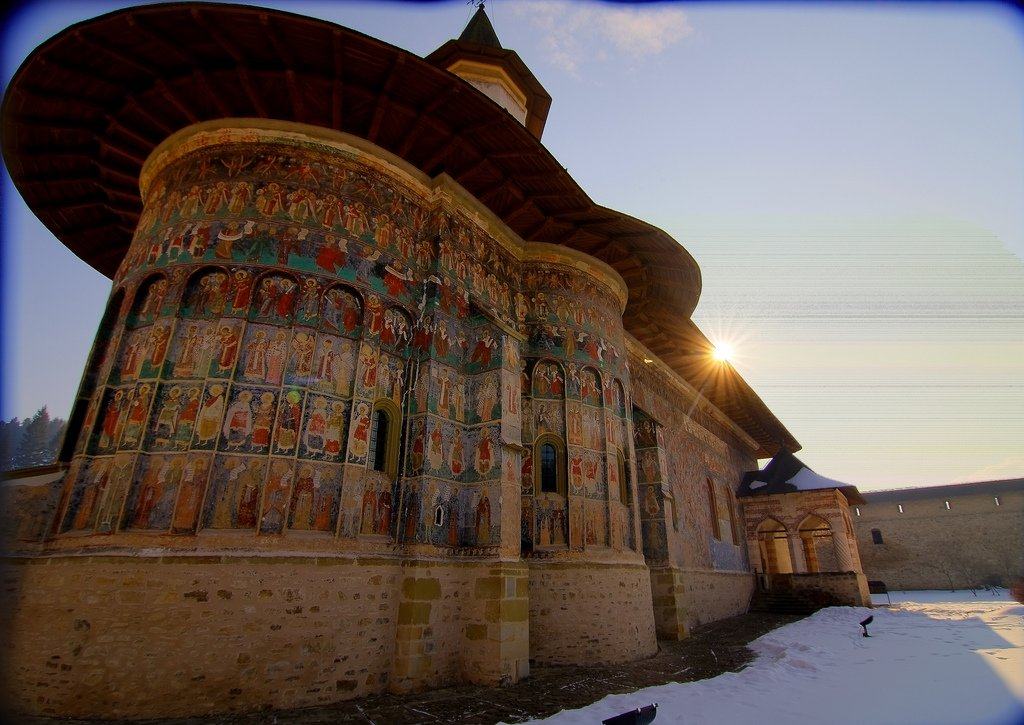
The Sucevita Monastery has been part of the UNESCO World Heritage list since 1993.
1. Sucevita Monastery (“The Church of the Resurrection”)
This famous church is surrounded by legend—according to local belief, the stone required to build the imposing structure was carried by a single woman and her ox-drawn chariot for 30 years to redeem some of her sins. However, in reality, the spectacular monastery was erected between 1584 and 1586 by the princely family Movilă and had the most wall paintings from all famous painted monasteries of Moldova.
Sucevita Monastery also has the best-preserved frescoes of all painted monasteries. Some attractions are Moses’ life, depicted on the ceiling of the room of the tombs on the inside, and the famous Ladder of the Virtues or Ladder to Paradise on the exterior, considered a masterpiece of medieval art. It illustrates the spiritual enlightening that a human being can achieve through his belief and good deeds, representing an ample biblical story from the Old and New Testament. This magnificent depiction is located on the northern facade, and it is the best-kept frescos of the time of all other monasteries.
Ioan and his brother Sofronie painted both inside and outside between 1596 and 1601, and it was the last monastery decorated with exterior frescoes.
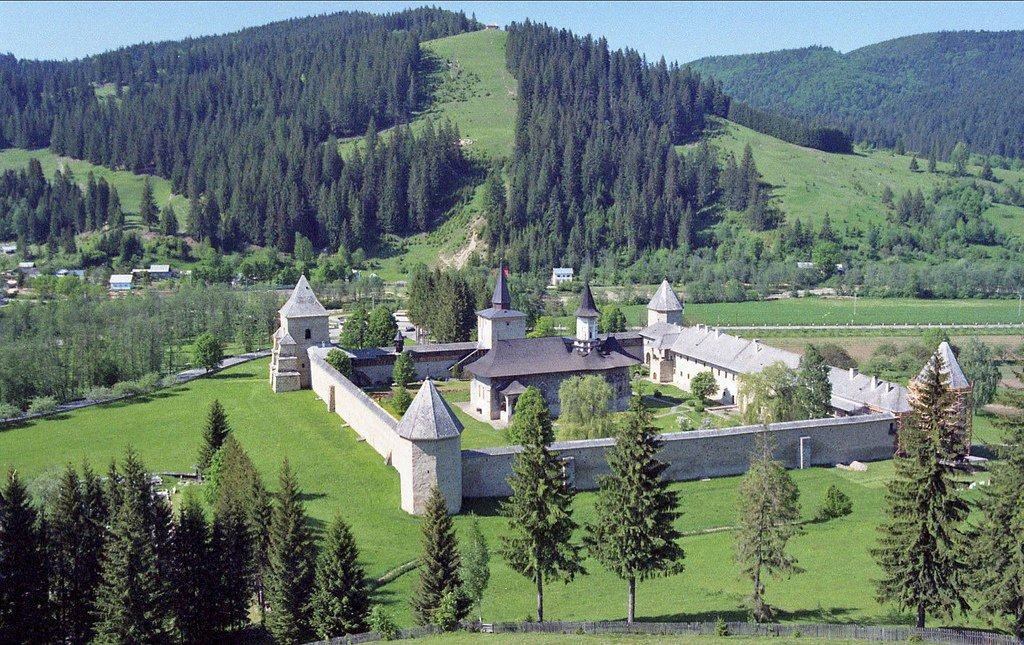
The western exterior wall of the church is not painted.
Within the monastery's ensemble, there is still a tiny lab for icon restoration and a museum with a rich and valuable collection of religious artifacts and icons, historical and art objects, including the oldest painted icon found in Moldavia, dated 1514. Here, you can also see the tomb covers of Simion and Ieremia Movila, which are rich portraits embroidered in silver thread, as well as illuminated manuscripts, which represent the fact that this was a printing center.
To sum up the importance of just one of the painted monasteries of Bucovina, it was a place of worship, a military fortification, a place for education, a printing center, and, nevertheless, a princely residence.
Address:
DN17A 169,
Sucevița 727510, România
2. Moldovița Monastery (“The Church of the Announciation”)
The ruler, Alexandru the Good, built the first monastery in Moldovita on the banks of the river, which had the same name at the beginning of the 15th century. Due to a landslip, the monastery collapsed, and its ruins are still visible at about 500 m from the new monastery, which was built in 1532 by the ruler Petru Rares. The new Moldovita monastery was equipped with defense towers and walls, transforming it into a fortified church.
Mural paintings on the inside and outside date from 1537, the predominant theme being Siege of Constantinople, and the dominant colors are brown-red. The southern wall illustrates one of the most beautiful iconographic works from the churches in Moldova, representing the Akathist Hymn.
The west entrance of the church comprises five arcades decorated with pictures of prayer. These are accompanied by representatives of classical cultures, such as Pitagora, Platon, Aristotel, and Sofocle, considered predecessors of Christianity.
Most remarkably, and often compared to Italian-style representation, Moldovita church scenes of The Descent from the Cross or The Crucifixion can be admired in the interior.
Address:
Vatra Moldoviţei commune,
Suceava, Romania
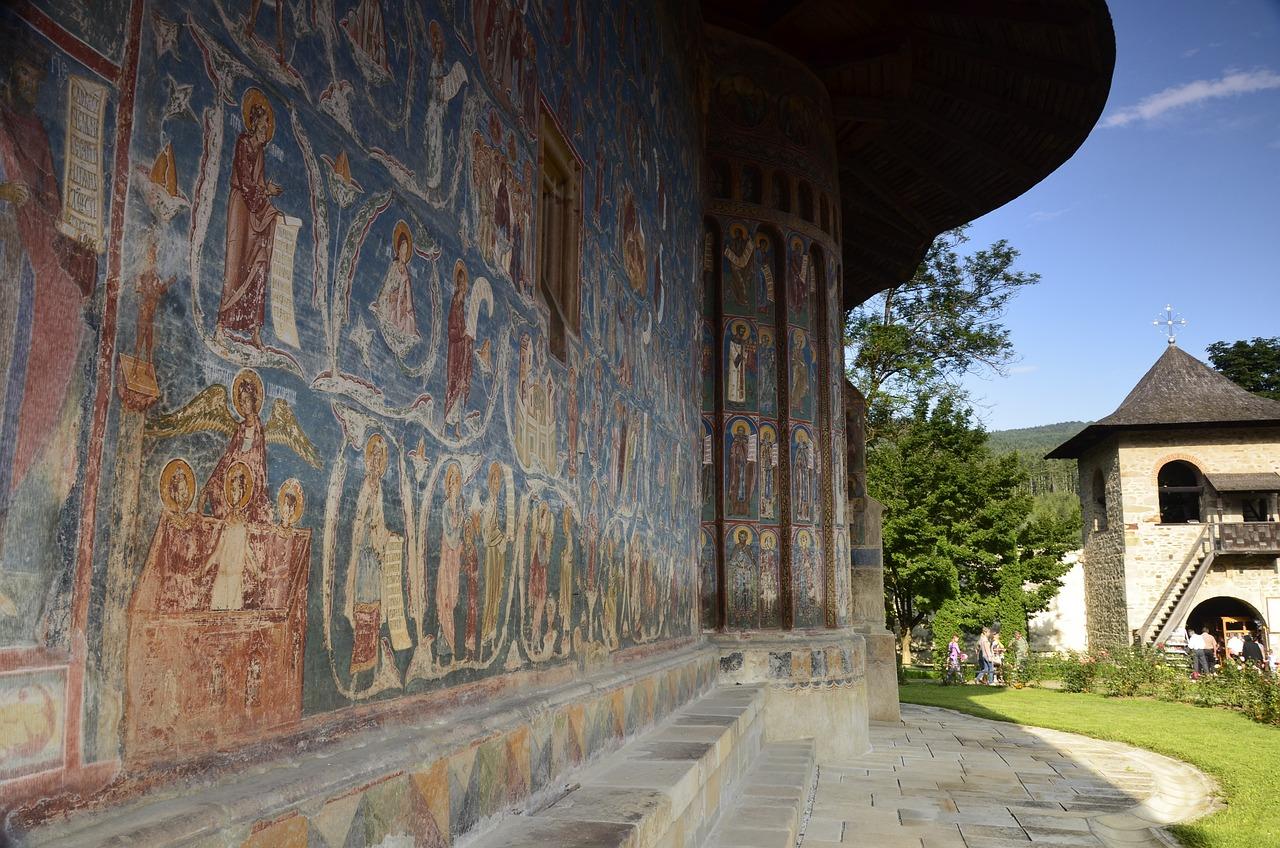
Voroneț Monastery is one of the most famous painted churches in Bucovina.
3. Voronet Monastery (“St. George” church)
Voronet Monastery is considered the most famous of all painted monasteries of Bucovina. This renowned church dates back to 1488 and was built under ruler Stefan the Great.
One of the main things Voronet monastery is famous for is the dominance of blue in its paintings. The substances needed to obtain the pigment used, which has resisted over decades, are still unknown today - this particular pigment is called Voronet blue. This unique feature got it listed among the other UNESCO World Heritage Sites.
Another particularity is the painting of the Judgement Day scene on the entire western wall, which is not interrupted by any window or door and dates back to 1547, during the rule of Prince Petru Rares. Its most famous fresco is the one that made Voronet Monastery known as the Sistine Chapel of the East.
Address:
Strada Voroneț 166,
Voroneț 725301, România
4. Probota Monastery (“St. Nicholas” Church)
The Probota monastery, built by the ruler Petru Rares in 1530, was a royal cemetery and a military post. Apart from its thick walls, this painted monastery has corner towers and a gate tower.
There, the tombs of Prince Petru Rares, Stefan Rares, and other royal family members can be found. The interior and exterior frescoes are of Byzantine art, and the distinctive touch of the church is the painted dome illustrating Judgement Day.
For a unique experience, the monastery also provides overnight accommodation and a meal.
Address:
Probota Monastery, Dolhasca village, county of Suceva
5. Arbore Monastery (“the Beheading of Saint John the Baptist”)
This church is of noble founding because it is missing steeples. While being built in a simple manner, the construction surprises through its detailing. Mural painting distinguishes itself by the longevity of the blue pigment.
The interior painting was made between 1503 and 1504 but deteriorated during Suleiman the Magnificent's campaign in 1538.
The exterior painting comprises scenes with a multitude of characters on the move. One of the scenes represents The Siege of Constantinople on the south wall, The Journey of the Wise Men, and The Last Judgement. The ensemble of paintings on the northern façade is considered the best of all paintings made during Stefan the Great's rule.
While Voronet Monastery is known for the unique blue of its west façade, Arbore Church is known for its particular shade of green. The blend and decoration techniques used to paint the Bucovina monasteries helped develop the Moldavian style, adding to the Byzantine school. These techniques were also adopted on Mount Athos.
Address:
DN2K 732,
Arbore 727015,
România
6. Humor Monastery (The “Dormition of the Virgin Mary”)
Humor monastery was built in 1530 by the ruler Petru Rares and painted in 1535. The specifics of its mural painting are a fresco with the Virgin Mary and the child on the entrance door, alongside the predominant red tones used.
Like Voronet, Moldovita, Arbore, and Sucevita churches, Humor Monastery was decorated with interior and exterior paintings. Remarkable and well-preserved paintings include Virgin Mary with the Child, _Siege of Constantinople,_ Judgement Day, and Tree of Jesse. Humor Monastery also stands out in its unique way, with a reddish brown shade used in its depictions.
Address:
Mănăstirea Humorului
727355, România
7. Pătrăuți Monastery (“The Church of the Holy Cross”)
The church maintains its original form, dating back to 1487, and was first established by the ruler Stefan the Great. Its name and reputation come from the famous mural painting of a rare subject: The Cavalcade of the Saints. It is the oldest church built in Moldovian style and is considered to have the oldest interior and exterior paintings.
Another monumental painting is a frightening scene of The Judgement Day, illustrating the fight between angels and demons - the demons are drawing to hell but are not succeeding, which gives hope to the ones judged. It was also the first nunnery, and its purpose was likely to provide a safe harbor for injured soldiers so they could heal after their endless battles.
The little yard combines byzantine, gothic and renaissance art and comprises a small rock table which is thought to have inspired the great artist Brancusi for his Table of Silence masterpiece.
Address: Biserica Monument, Parohia Pătrăuţi 2
Pătrăuţi commune, 727420, jud. Suceava
8. Suceava Monastery (“Church of St. George”/ Saint George's Church)
The work for the church dedicated to Saint George began in 1514 under Bogdan, the 3rd of Moldova, and was finished in 1522. Being designated as the seat of the Moldovan metropolitan church, it was painted both on the inside and the outside, a process which took from 1532 to 1534.
The commemorative plate above the door of the church illustrates the following:
“With the Father’s will, the Son’s help and the Holy Spirit’s completion, the well-honoring and worshipper of Christ, Bogdan, by God’s mercy Prince of Moldavia, wanted to build this church of the Metropolitanate of Suceava that celebrates the great St. Martyr George, who helps win the wars. And he started building it in the year 7022 (1514) but never completed it. Still, his son, Stephen, by God’s mercy Prince of Moldavia, with the help of God, finished building up from the window level and completed it in the year 7030 (1522), on November 6, during the 6th year of his reign. It was consecrated by the hand of His Holiness the Metropolitan Bishop Teoctist“.
The iconostasis is in the Moldovan baroque style, which is remarkable due to its dimensions, the high detailing of the ornaments, and the color palette.
Address:
Strada Ion Vodă Viteazul 2,
Suceava 720034, România
Experience spirituality in a different way by visiting the Bucovina monasteries
Romanians are deeply religious—not visibly and openly, but deeply. And they are connected to the spiritual centers I mentioned in this article. You can find places of worship worldwide, including churches and cathedrals, but nothing like the painted monasteries, which have a rich history and importance in developing the country's Northeastern corner.
Whether it is the magnificent beauty of the blue frescoes on the Western facade of Voronet Monastery, the impressive color palette of the Suceava Monastery, or the intricate depictions of Humor monastery and all the other monasteries in the region, you might never see a more colorful depiction of religious adoration within the context of Eastern Christianity.
What is more interesting is that throughout the entire Bucovina region, you will feel the same sense of spirituality seeping from religious constructions whose paintings date back to the 16th century to every small church, newly erected in the vicinity of a budding community.
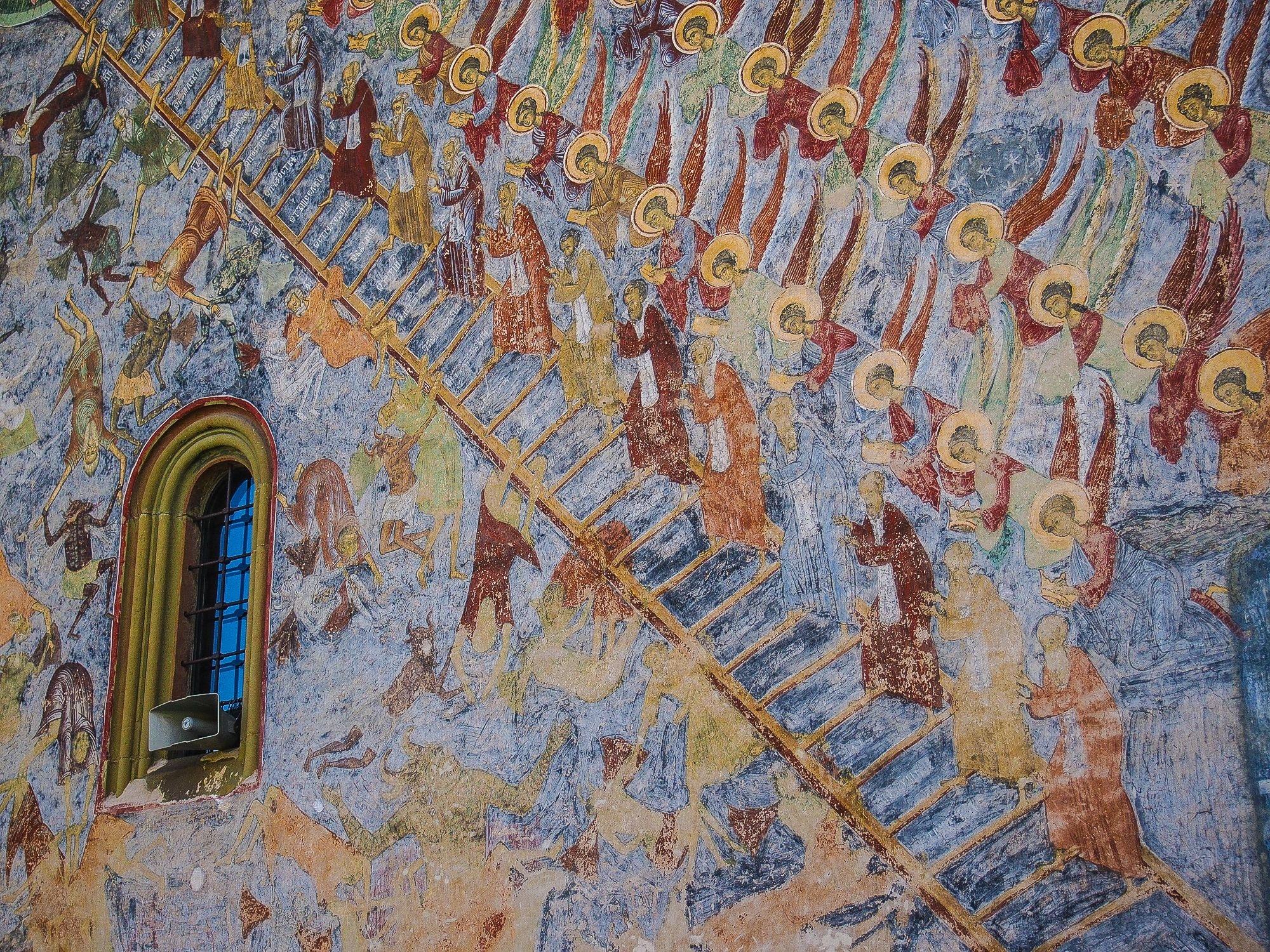
Can you spend the night at any of the monasteries?
While being so close to such a peaceful place may sound very appealing to travelers, it is a right reserved for the nuns and monks who dedicate their lives to prayer. While some monasteries may, at times, open their doors and welcome pilgrims on special occasions, turning them into tourist accommodations would be problematic for the general flow of monastic life, which is intended to be separated from the outside world.
Some travelers I accompanied on a monastery tour wished to spend more time in the area and opted for accommodations in the surrounding towns. This would be a more convenient option as it may give you access to things you may need from restaurants and stores you might otherwise lack in the austere context of monastery life.
Coming to Romania to visit the Painted Churches of Bukovina? Don't forget to check the most appreciated tours from our website:
4 times a year we prepare a newsletter with local stories, places and our special insights about Romanian culture and local life that will inspire you to visit our country and have an authentic local experience. Would you like to get it?
